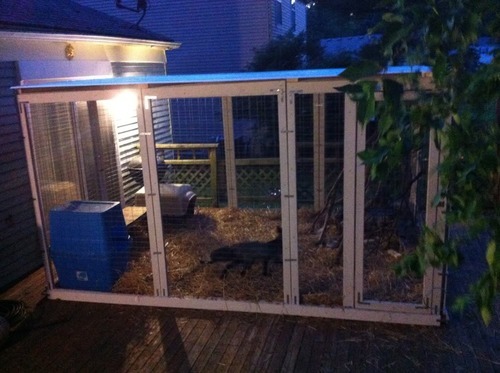Providing a home in which all of these behavioural needs can be met would likely prove very challenging to the average pet owner. Fortunately, many of the enclosures posted in exotic animal forums and fox enthusiast sites do try to accommodate these behaviours, as can be seen in the following examples.

An enclosure constructed by a Michigan woman for her fox Loki. We can see he has digging substrate, as well as couple places to hide. (Source)

Silver fox Taiga’s enclosure in Latvia. Under the snow is soft sandy dirt, permitting her to dig. We can also see a couple shelters she can hide in, as well as long structures she could run along and climb. (Source)
Here we can see Ron the red fox run around his enclosure. There is natural earth he can dig, a place to hide near the house, and space to run.
Based on the NFACC guidelines for housing of farmed foxes, each fox is required to have a minimum of 9-15 square feet, depending on the stage of life of the fox (NFACC, 2013). These enclosures far surpass the requirements, which is certainly encouraging. However, these guidelines may not be the best indicator of good welfare, as one may argue they represent the bare minimum, and something pet owners should hopefully surpass in the care of a single animal.
It’s really impossible to say what proportion of fox owners follow the trend of these kinds of enclosures – there is no universal regulation as to what constitutes an appropriate home for a pet fox. However one may hope that most owners provide their animals with relatively large enriched environments such as these.
